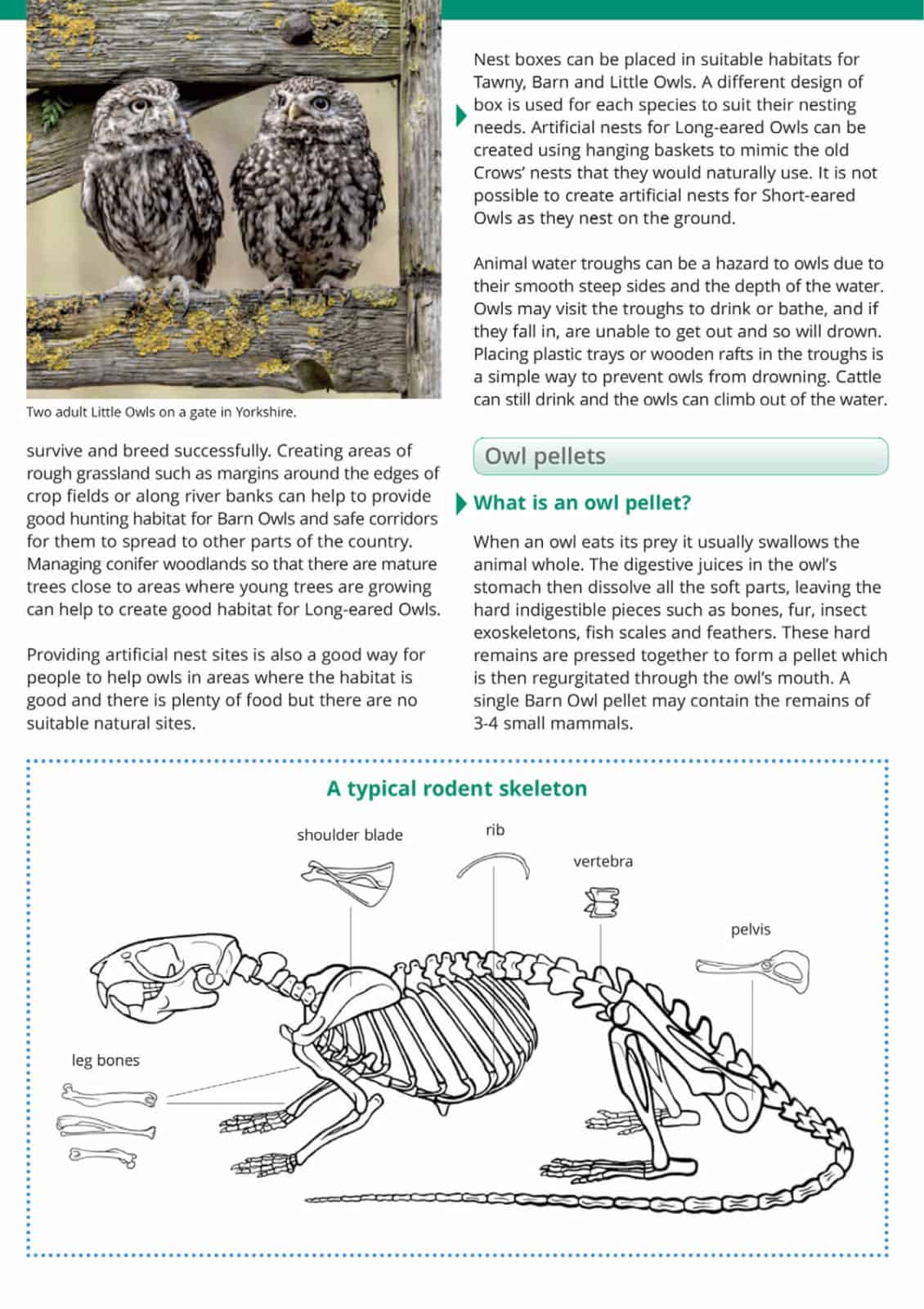Owls and owl pellets guide
The Owls and owl pellets guide from the FIeld Studies Council is two guides in one.
- A field guide to adult owls.
- A guide to investigating owl pellets.
Our Owls and owl pellets identification chart consists of 8 fold-out pages featuring full-colour illustrations, making the identification of owls and their pellets of easier to achieve. It features beautiful colour paintings of the 5 owls living in the wild in Britain and Ireland, both perched and in flight. There’s a further identification guide on the reverse side, with a text description of the characteristics.
Owls are birds of prey. They hunt for a variety of prey such as small mammals, birds, frogs, worms and insects. Generally they swallow their prey whole – bones, fur and all. Later they regurgitate the indigestible parts as a pellet. The pellet’s contents help show what the owl has been eating. Altogether there are five species of owl resident in Britain. The snowy owl is not a permanent resident, and there have been no British breeding records for several years. All owls belong to the order Strigiformes which consists of two families – Tytonidae (the barn owls) and Strigidae (the true owls).
Of course owls are not the only birds which produce pellets. So as well as illustrations and descriptions of the pellets produced by each species of owl, the guide shows how to distinguish pellets produced by other birds (kestrel, sparrowhawk, gull and corvids). There is a systematic identification key to the contents of owl pellets. Within a pellet you might find complete skulls, jaws, teeth and other smaller bones.
Accompanying text on the reverse side covers taxonomy of owls, their adaptations for hunting, food chains and conservation status. A summary table gives further useful identification hints for each species, including body length, wingspan, call, habitat, UK breeding range, main prey and conservation status. The authors have suggested where to look for pellets and how they can be prepared and dissected.
The Owls guide was produced in partnership with the Hawk and Owl Trust.
Our popular wildlife field guides measure 24.5cmx17.5cm and are extremely lightweight so are the perfect identification aid for popping in your bag when heading outside. All wildlife identification guides are laminated, meaning they are showerproof for use outside and can be wiped clean.








